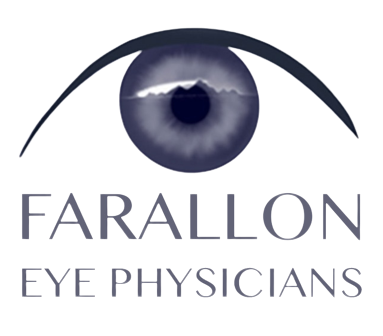Farsightedness - Hyperopia
Farsightedness - Hyperopia
Farsightedness - Hyperopia
Farsightedness, medically termed hyperopia, is a type of refraction error. People with farsightedness can see distant objects clearly but have difficulty seeing objects that are close. Nearby objects appear blurry. Farsightedness is easily corrected with glasses or contact lenses.
Anatomy
Your eyes and brain work together with amazing efficiency. Light rays enter the front of your eye and are interpreted by your brain as images. Light rays first enter your eye through the cornea, the “window” of your eye. The cornea is a clear dome that helps your eyes focus.
The anterior chamber is located behind the cornea and in front of the iris. The anterior chamber is filled with a fluid that maintains eye pressure, nourishes the eye, and keeps it healthy. The iris is the colored part of your eye. Eye color varies from person to person and includes shades of blue, green, brown, and hazel. The iris contains two sets of muscles. The muscles work to make the pupil of your eye larger or smaller. The pupil is the black circle in the center of your iris. It changes size to allow more or less light to enter your eye.
After light comes through the pupil, it enters the lens. The lens is a clear curved disc. Muscles adjust the curve in the lens to focus clear images on the retina. The retina is located at the back of your eye.
Your inner eye, or the space between the posterior chamber behind the lens and the retina is the vitreous body. It is filled with a clear gel substance that gives the eye its shape. Light rays pass through the gel on their way from the lens to the retina.
The retina is a thin tissue layer that contains millions of nerve cells. The nerve cells are sensitive to light. Cones and rods are specialized receptor cells. Cones are specialized for color vision and detailed vision, such as for reading or identifying distant objects. Cones work best with bright light. The greatest concentration of cones is found in the macula and fovea at the center of the retina. The macula is the center of visual attention. The fovea is the site of visual acuity or best visual sharpness. Rods are located throughout the rest of the retina.
Your eyes contain more rods than cones. Rods work best in low light. Rods perceive blacks, whites, and grays, but not colors. They detect general shapes. Rods are used for night vision and peripheral vision. High concentrations of rods at the outer portions of your retina act as motion detectors in your peripheral or side vision.
The receptor cells in the retina send nerve messages about what you see to the optic nerve. The optic nerve extends from the back of each eye and join together in the brain at the optic chiasm. From the optic chiasm, the nerve signals travel along two optic tracts in the brain to eventually reach the occipital cortex.
Causes
Farsightedness may be present at birth. Many children outgrow the condition. However, farsightedness can become more apparent with aging. Farsightedness is a risk factor for glaucoma and lazy eye.
If you have family members with farsightedness, you are more likely to develop the condition. Farsightedness results when the visual image is focused behind the retina instead of directly on it. This may occur if a person’s eyeball is too short, the focusing power of the eye is too weak, or if the cornea is too flat.
Symptoms
Farsightedness makes it difficult to see objects up close. You may be able to see distant objects more clearly. Text or objects that are near you may appear blurry or out of focus. You may have problems seeing to read. You may get a headache when you read. You may develop eye strain and tired, burning, or aching eyes. Children may develop strabismus (crossed eyes).
Diagnosis
Your doctor can diagnose farsightedness with a general eye exam. Your general eye examination may include visual acuity and refraction. Visual acuity testing determines your ability to see near and far distances. Refraction is used to determine the degree of the refractive error. The information is used to write a prescription for glasses.
Your eye examination may also include slit-lamp testing, in which your doctor uses a slit light and a microscope to view your inside eye structures. Your eyes may be tested for glaucoma with pressure testing.
Treatment
Farsightedness is easily corrected with prescription glasses or contact lenses. Some people may choose to just use reading glasses. People with farsightedness may be candidates for bifocal lenses to treat both farsightedness and near sightedness as they age. Surgery techniques are available, but not commonly used to treat farsightedness.
This information is intended for educational and informational purposes only. It should not be used in place of an individual consultation or examination or replace the advice of your health care professional and should not be relied upon to determine diagnosis or course of treatment.
The iHealthSpot patient education library was written collaboratively by the iHealthSpot editorial team which includes Senior Medical Authors Dr. Mary Car-Blanchard, OTD/OTR/L and Valerie K. Clark, and the following editorial advisors: Steve Meadows, MD, Ernie F. Soto, DDS, Ronald J. Glatzer, MD, Jonathan Rosenberg, MD, Christopher M. Nolte, MD, David Applebaum, MD, Jonathan M. Tarrash, MD, and Paula Soto, RN/BSN. This content complies with the HONcode standard for trustworthy health information. The library commenced development on September 1, 2005 with the latest update/addition on April 13th, 2016. For information on iHealthSpot’s other services including medical website design, visit www.iHealthSpot.com.
To schedule an appointment for optical, ophthalmology or cosmetic services in Daly City, California, simply call the office of Susan Longar, MD.



